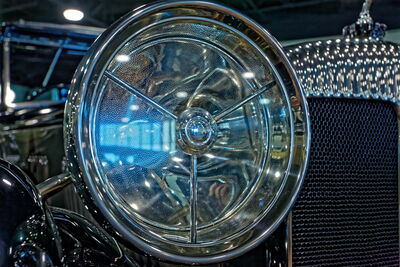Sicily: Siracusa Part 2 - More from the Neopolis Archeological Park
Feb 16, 2024 14:26:21 #
Here are some more images from this most interesting and photogenic place. Some additional narrative:
A Visit to the Archaeological Park of Siracusa, Sicily
BILL DE GIULIO UPDATED:JAN 29, 2024 12:06 AM EST
Exploring Greek and Roman History in Siracusa
As faith, luck, and history would have it, two of the most significant ancient archaeological sites from both Greek and Roman history are situated adjacent to one another in the northwest corner of Siracusa. The Neapolis Archaeological Park of Siracusa contains the stunning Greek Theatre as well as the Roman Amphitheatre that combine to make this one of the greatest archaeological sites in all of Italy.
The Roman Amphitheatre here is one of the largest amphitheaters ever constructed and dates back to the 3rd century AD. The star attraction of the park, however, is the very well-preserved Greek Theatre, which dates back to at least the 5th century BC.
The Archaeological Park, along with the entire city of Siracusa, was designated a UNESCO World Heritage Site in 2005, a distinction that is well deserved.
Plan on at least 2 to 3 hours to visit both theaters and the quarry. Be sure to hang onto your ticket when going from one theater to the other.
Upon entering the Archaeological Park you will first encounter the Roman Amphitheatre. The Roman's use of their amphitheaters was much different than that of the Greeks. Like the famous arena in Verona and the Colosseum in Rome, the amphitheater here in Siracusa was used primarily for violent Gladiator contests and wild animal hunts.
The theatre is large and measures about 140 meters by 119 meters (external dimensions) with the lower level having been dug out of the rock. All of the upper sections of the theater that were constructed of stone were dismantled in the 16th century by the Spanish for use on the island of Ortygia.
In the center of the elliptical arena is a rectangular room that is supplied by two canals. This area was possibly used to store equipment for the contests that took place above in the arena. Another possible use was to collect the blood and gore from the gruesome contests that took place.
Although the Roman Amphitheatre is not as well preserved as its Greek neighbor it is still a sight to behold and should not be overlooked.
A short walk from the Roman Amphitheatre is the Greek Theatre. Constructed in the 5th century BC, this wonderfully preserved theater has remained in remarkable condition and appears today much as it did centuries ago.
Unlike the Romans, the Greeks used their theater for a more civilized form of entertainment. Plays, tragedies, circus performances and alike were performed here to entertain the masses. It was also used for public meetings and gatherings. The theater was cut directly out of the limestone rock with the seats facing the sea providing a wonderful view, especially from the top tiers of the theater.
After roaming around the seating and upper areas of the Greek Theatre be sure to go around the back to get a view from the backstage area.
As one of the most impressive and largest theaters ever constructed in the Greek world, its fifty-nine rows of seating could hold as many as 15,000 spectators. Today, in addition to being one of Sicily’s most popular attractions, the theater is also host to an annual Greek Theatre festival held from mid-May until the end of June. If you happen to have a chance to attend a performance here take advantage of this once in a lifetime opportunity.
Just outside of the Greek Theatre is an area that is often overlooked by tourists. Called the Latomia del Paradiso, or Paradise Quarry, this former limestone quarry is now a very green and peaceful area that is filled with lemon and orange trees.
It is worth the time and effort to walk the path through this beautiful area which will take you to a huge cave called the Ear of Dionysius. Legend has it that Dionysius, the ruler of ancient Siracusa would eavesdrop on the prisoners who were incarcerated here. The cave, which was carved out of the limestone hill, is shaped similar to a human ear and because of its shape, it has excellent acoustics, which allowed Dionysius the ability to eavesdrop. The cave measures 23 meters high, 65 meters deep and makes for an interesting visit.
There are other quarries here in the park along with an interesting necropolis that has burial chambers cut directly into the rock. The most famous of these is said to be the Tomb of Archimedes, the great mathematician, although there is historical evidence to dispute this.
If you have just one day to spend in Siracusa I would recommend splitting the day between the Archaeological Park and the island of Ortygia. Both are not to be missed and will give you a great sense of the over 2,500 years of history that have helped to shape this corner of Sicily.
https://wanderwisdom.com/travel-destinations/The-Archaeological-Park-Siracusa-Sicily
For additional images of the Archeological Park, please see my previous post:
https://www.uglyhedgehog.com/t-799740-1.html
I hope you enjoy these!
Mark
A Visit to the Archaeological Park of Siracusa, Sicily
BILL DE GIULIO UPDATED:JAN 29, 2024 12:06 AM EST
Exploring Greek and Roman History in Siracusa
As faith, luck, and history would have it, two of the most significant ancient archaeological sites from both Greek and Roman history are situated adjacent to one another in the northwest corner of Siracusa. The Neapolis Archaeological Park of Siracusa contains the stunning Greek Theatre as well as the Roman Amphitheatre that combine to make this one of the greatest archaeological sites in all of Italy.
The Roman Amphitheatre here is one of the largest amphitheaters ever constructed and dates back to the 3rd century AD. The star attraction of the park, however, is the very well-preserved Greek Theatre, which dates back to at least the 5th century BC.
The Archaeological Park, along with the entire city of Siracusa, was designated a UNESCO World Heritage Site in 2005, a distinction that is well deserved.
Plan on at least 2 to 3 hours to visit both theaters and the quarry. Be sure to hang onto your ticket when going from one theater to the other.
Upon entering the Archaeological Park you will first encounter the Roman Amphitheatre. The Roman's use of their amphitheaters was much different than that of the Greeks. Like the famous arena in Verona and the Colosseum in Rome, the amphitheater here in Siracusa was used primarily for violent Gladiator contests and wild animal hunts.
The theatre is large and measures about 140 meters by 119 meters (external dimensions) with the lower level having been dug out of the rock. All of the upper sections of the theater that were constructed of stone were dismantled in the 16th century by the Spanish for use on the island of Ortygia.
In the center of the elliptical arena is a rectangular room that is supplied by two canals. This area was possibly used to store equipment for the contests that took place above in the arena. Another possible use was to collect the blood and gore from the gruesome contests that took place.
Although the Roman Amphitheatre is not as well preserved as its Greek neighbor it is still a sight to behold and should not be overlooked.
A short walk from the Roman Amphitheatre is the Greek Theatre. Constructed in the 5th century BC, this wonderfully preserved theater has remained in remarkable condition and appears today much as it did centuries ago.
Unlike the Romans, the Greeks used their theater for a more civilized form of entertainment. Plays, tragedies, circus performances and alike were performed here to entertain the masses. It was also used for public meetings and gatherings. The theater was cut directly out of the limestone rock with the seats facing the sea providing a wonderful view, especially from the top tiers of the theater.
After roaming around the seating and upper areas of the Greek Theatre be sure to go around the back to get a view from the backstage area.
As one of the most impressive and largest theaters ever constructed in the Greek world, its fifty-nine rows of seating could hold as many as 15,000 spectators. Today, in addition to being one of Sicily’s most popular attractions, the theater is also host to an annual Greek Theatre festival held from mid-May until the end of June. If you happen to have a chance to attend a performance here take advantage of this once in a lifetime opportunity.
Just outside of the Greek Theatre is an area that is often overlooked by tourists. Called the Latomia del Paradiso, or Paradise Quarry, this former limestone quarry is now a very green and peaceful area that is filled with lemon and orange trees.
It is worth the time and effort to walk the path through this beautiful area which will take you to a huge cave called the Ear of Dionysius. Legend has it that Dionysius, the ruler of ancient Siracusa would eavesdrop on the prisoners who were incarcerated here. The cave, which was carved out of the limestone hill, is shaped similar to a human ear and because of its shape, it has excellent acoustics, which allowed Dionysius the ability to eavesdrop. The cave measures 23 meters high, 65 meters deep and makes for an interesting visit.
There are other quarries here in the park along with an interesting necropolis that has burial chambers cut directly into the rock. The most famous of these is said to be the Tomb of Archimedes, the great mathematician, although there is historical evidence to dispute this.
If you have just one day to spend in Siracusa I would recommend splitting the day between the Archaeological Park and the island of Ortygia. Both are not to be missed and will give you a great sense of the over 2,500 years of history that have helped to shape this corner of Sicily.
https://wanderwisdom.com/travel-destinations/The-Archaeological-Park-Siracusa-Sicily
For additional images of the Archeological Park, please see my previous post:
https://www.uglyhedgehog.com/t-799740-1.html
I hope you enjoy these!
Mark
Gail at the Paradise Quarry
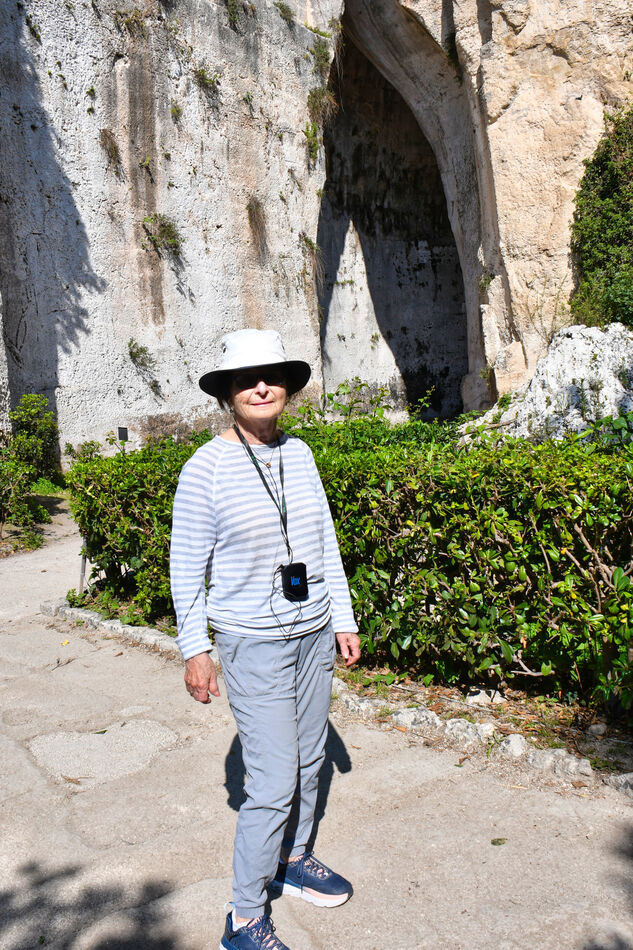
(Download)
The Latomie of Syracuse is the limestone quarries later used for prisons. Now it is a tropical garden full of local and exotic plant species.
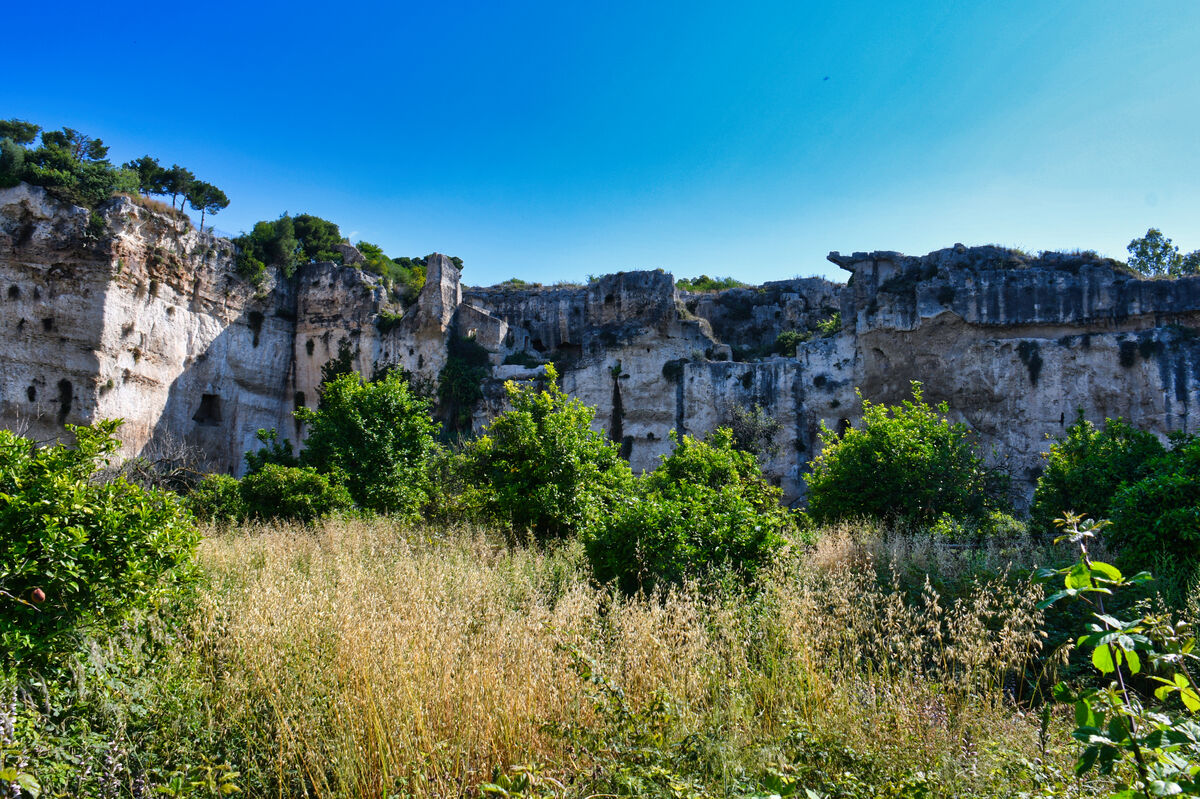
(Download)
Grotta dei Cordari (the ropemaker's grotto) – now closed for security reasons. Ropemakers worked here for centuries.
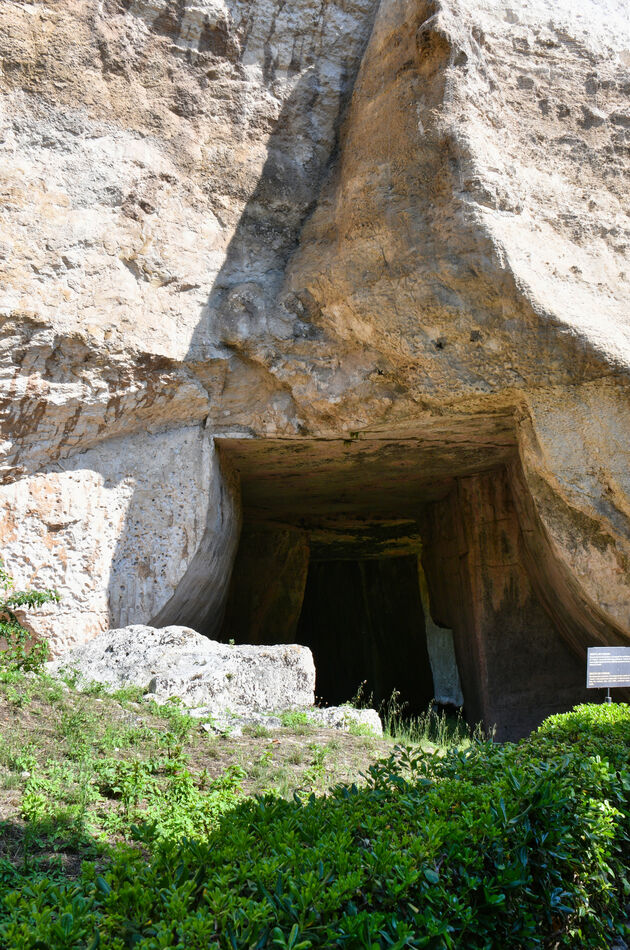
(Download)
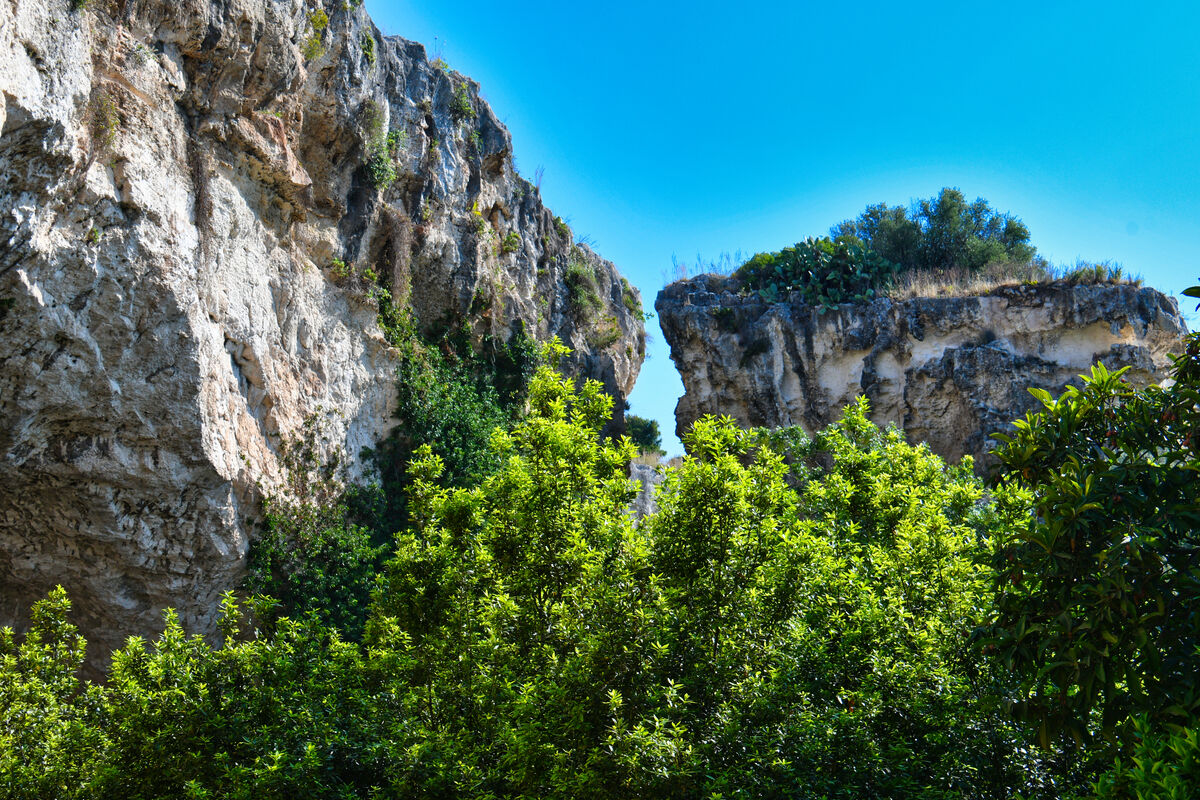
(Download)
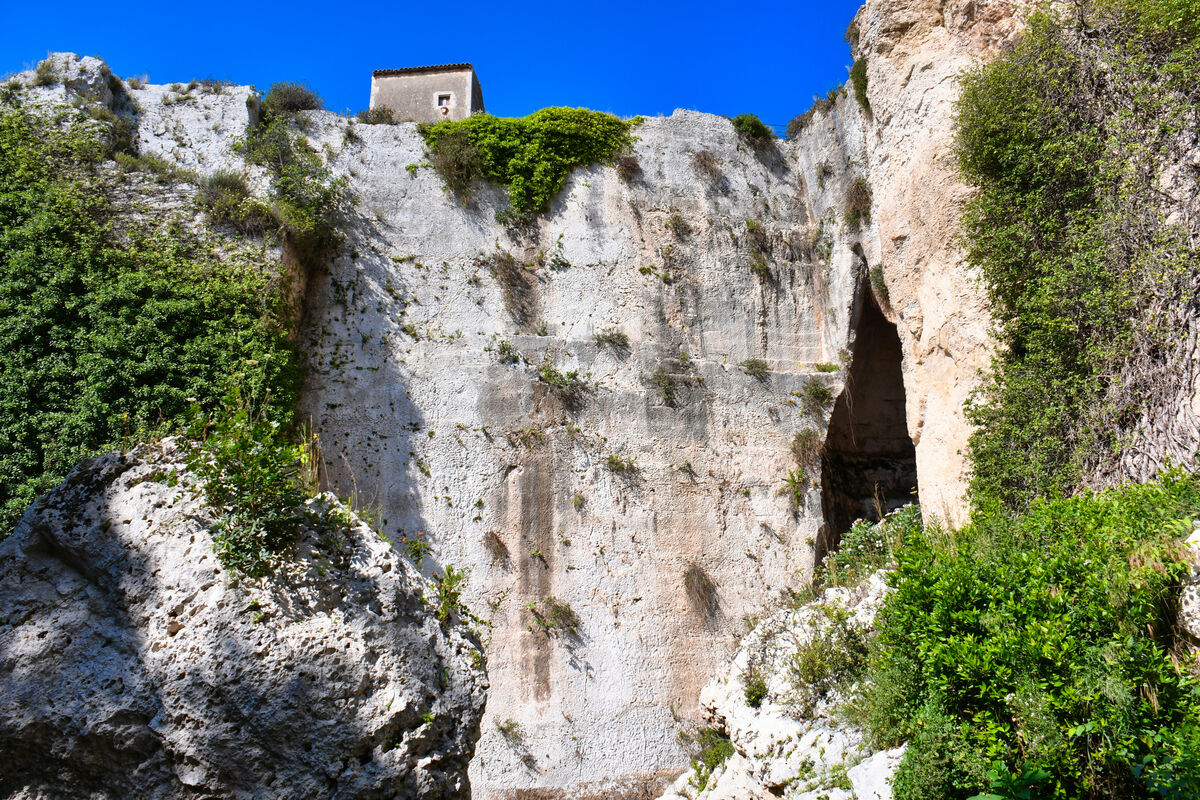
(Download)
The Ear of Dionysos (Orecchio di Dionisio). Caravaggio gave this artificial grotto its name in (1608).
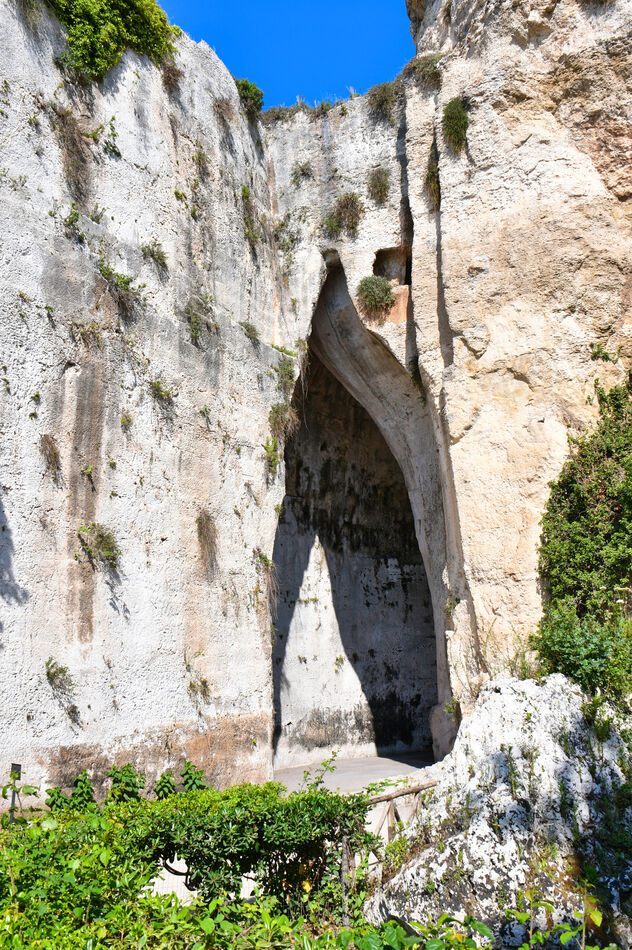
(Download)

(Download)

(Download)
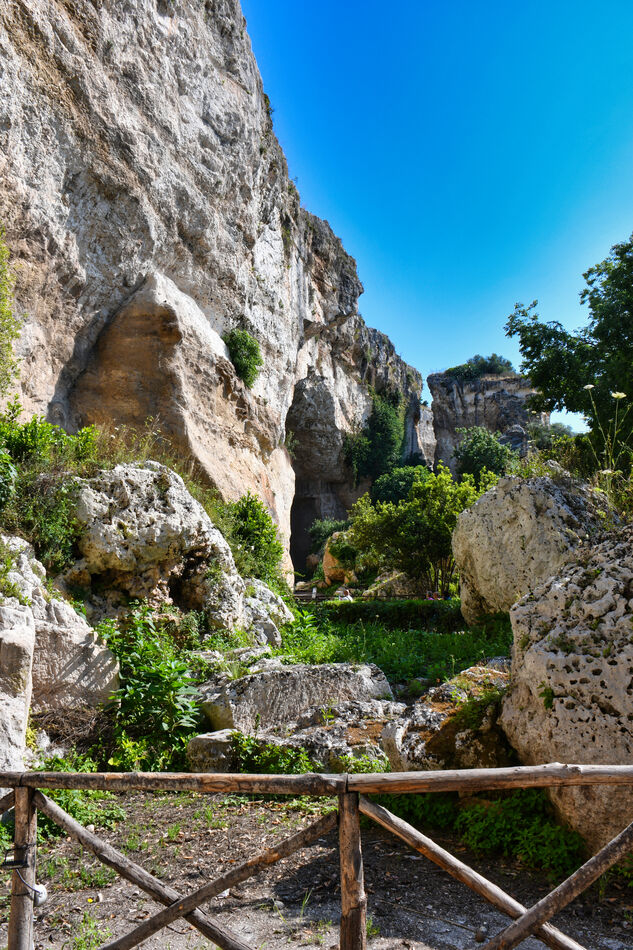
(Download)

(Download)
Feb 16, 2024 14:27:37 #
Feb 16, 2024 14:46:52 #
Feb 16, 2024 14:51:13 #
Feb 16, 2024 15:31:53 #
Feb 16, 2024 15:31:59 #
rwm283main
Loc: Terryville, CT
Great photos.
I was stationed at Catania Sicily back in 1976. Great country. One that I would like to visit again.
Thanks for sharing.
Rich
I was stationed at Catania Sicily back in 1976. Great country. One that I would like to visit again.
Thanks for sharing.
Rich
Feb 16, 2024 15:42:41 #
Was told back in the day -- That it was a death sentence for prisoners sent here
Feb 16, 2024 15:43:28 #
Feb 16, 2024 17:12:41 #
Feb 16, 2024 18:04:41 #
Feb 16, 2024 18:32:09 #
srfmhg wrote:
Here are some more images from this most interesti... (show quote)
Mark, superbly picturesque, especially #4, and beautifully shot, as usual for you 🏆🏆🏆🏆🏆
Feb 16, 2024 19:21:49 #
srfmhg wrote:
Here are some more images from this most interesti... (show quote)
Interesting and well photographed set Mark.
Feb 16, 2024 20:51:48 #
Feb 16, 2024 20:53:13 #
rwm283main wrote:
Great photos.
I was stationed at Catania Sicily back in 1976. Great country. One that I would like to visit again.
Thanks for sharing.
Rich
I was stationed at Catania Sicily back in 1976. Great country. One that I would like to visit again.
Thanks for sharing.
Rich
Thanks so much for commenting Rich. I'm glad they brought back pleasant memories for you. Many more to come.
Feb 16, 2024 20:53:59 #
ken_stern wrote:
Was told back in the day -- That it was a death sentence for prisoners sent here
Interesting info Ken. Thanks.
If you want to reply, then register here. Registration is free and your account is created instantly, so you can post right away.






